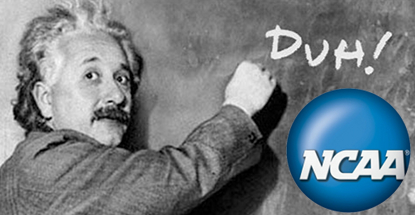 A new study has demonstrated the power that betting lines hold over college football television ratings.
A new study has demonstrated the power that betting lines hold over college football television ratings.
Economics professors Steven Salaga and Scott Tainsky compiled the study, which was recently published in the journal Economic Letters. The professorial pair concluded that TV ratings were higher when the scoring margin moved closer to the point spread late in the game and that viewers kept watching games longer when the total number of points scored remained on the ‘under’ side of an over/under betting line.
The authors claim to have wanted to end speculation as to whether betting drives interest in games, which would poke some major holes in the credibility of the National Collegiate Athletic Association (NCAA), which is one of the most vociferous opponents of betting on college athletics, despite profiting handsomely from the interest that betting provides for its product.
Using Nielsen television ratings for live NCAA broadcasts of Pac-10 (now Pac-12) football games during the 2005-2009 seasons, the authors looked at games in which the point spread was between 14 and 28 points. These samples were further narrowed to games in which the favorite was ahead by at least 10 points going into the fourth quarter.
The authors concluded that both average and second-half ratings were higher for games in which the scoring margin moved closer to the point spread late in the game – even when the outcome of the game appeared to be a foregone conclusion. For games with spreads of at least 21 points, every seven-point gain that the scoring margin moved closer to the point spread increased viewership by a 1.235 Nielsen rating (roughly 30% of the overall audience). The ratings bump was smaller for games with 14- or 28-point spreads but “still significant.”
Bettors also appeared to be driving ratings for games in which the total points scored remained under the betting line. Both full-game and second-half ratings were lower when a game went over the total points line while viewers tended to stick with games in which the possibility of an under result remained.
Salaga told ESPN’s David Purdum that their study’s sample size was admittedly small but they planned to perform further research on a wider swathe of NCAA and National Basketball Association games to see if similar trends were present.
